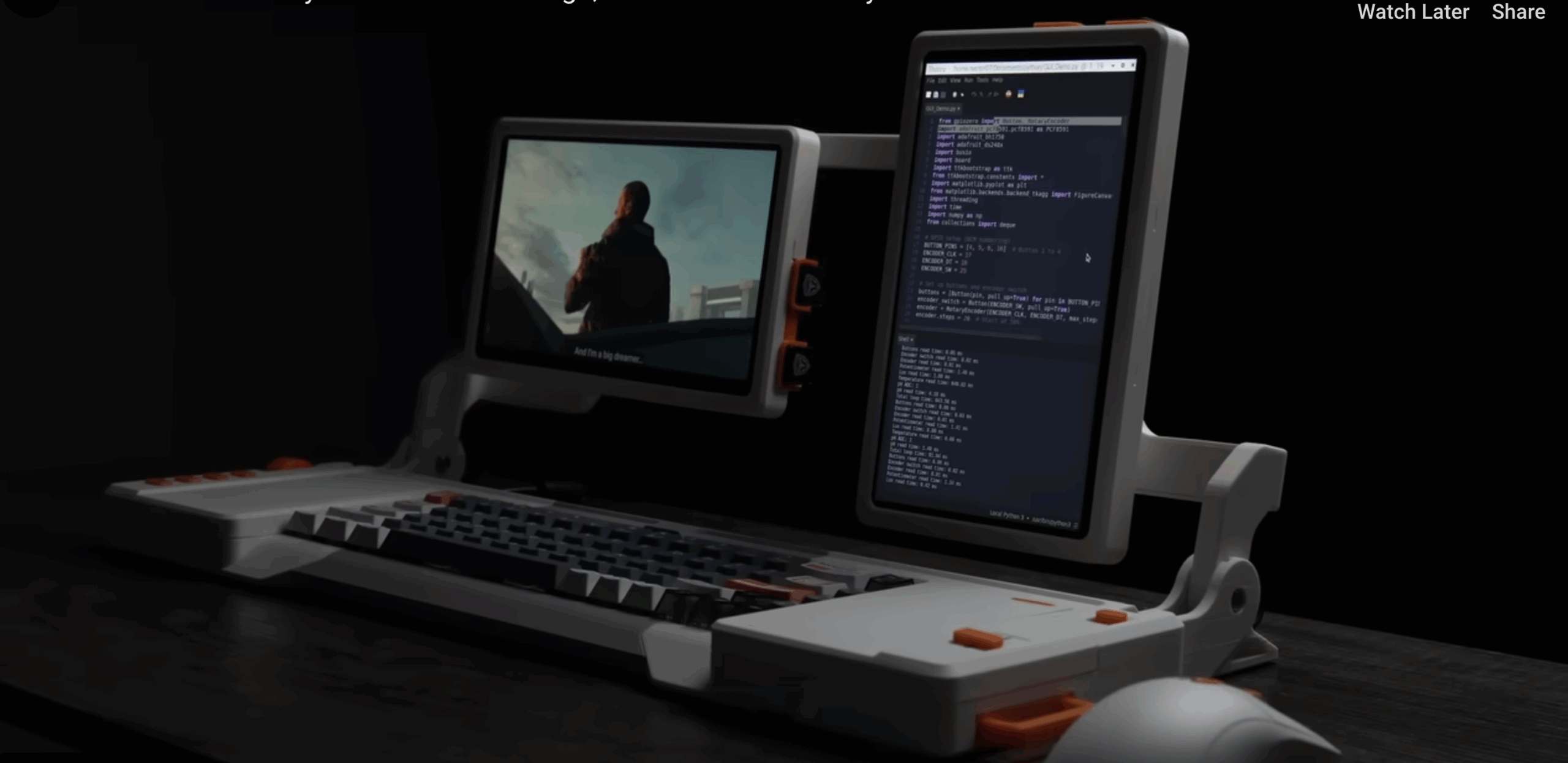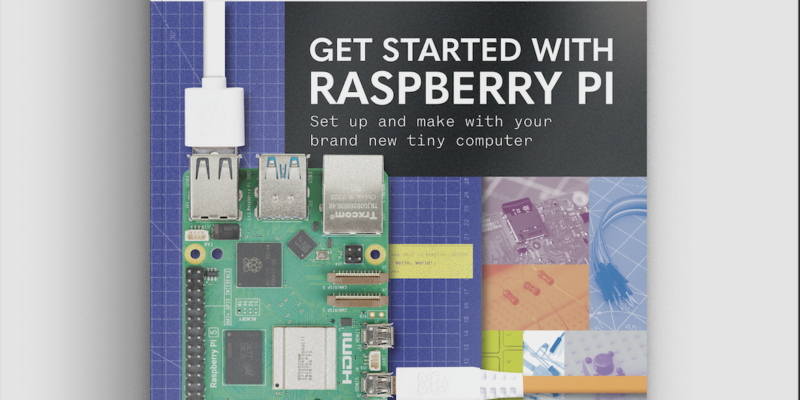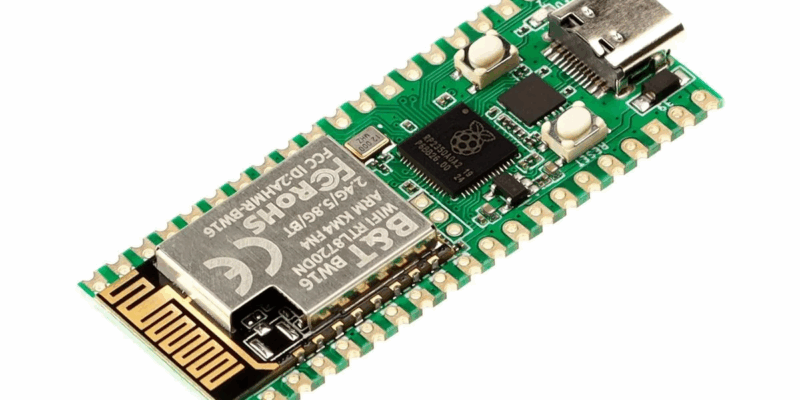Dual-screen cyberdeck
By Andrew Gregory. Posted

We love a nice cyberdeck build, and this one by Sector 07 has everything we want from one. It’s built on a Raspberry Pi 5, it’s fully 3D-printed, and all the design files are on GitHub for anyone to come along and have a go themselves. Three custom circuit boards, designed in KiCad, break out the GPIO pins from the Raspberry Pi. These boards were made by PCBWay – if you need a tutorial or three on how to design and get boards manufactured, you’re in luck, as we’ve featured getting designs fabricated by an external service in this and the previous two issues.
Advertisement
Get started with Raspberry Pi – everything you need to know to start your journey!
The maker has added a few unique touches to make this cyberdeck more useful than just a laptop. There’s a linear slider, which can be used to control volume. There are four programmable buttons, for whatever hotkeys the user so wishes to program.
And there’s a rotary encoder with a push button, which is also programmable. There’s a Qwiic connector at the back of the device for attaching I2C sensors. And there’s also a full complement of GPIO pins exposed, so that you can connect any HAT. Both screens can rotate 90 degrees – there’s a mechanical stop inside each mechanism so that the user doesn’t accidentally over-rotate and damage the cables. The Raspberry Pi’s SD card is accessible too, so you don’t have to take the whole Raspberry Pi out to change OS images (though you can, as the maker has designed it to be easy to remove).

Features Editor Andrew trawls the internet for Cool Stuff while keeping the magazine running smoothly.
Subscribe to Raspberry Pi Official Magazine
Save up to 37% off the cover price and get a FREE Raspberry Pi Pico 2 W with a subscription to Raspberry Pi Official Magazine.
More articles

Get started with Raspberry Pi in Raspberry Pi Official Magazine 161
There’s loads going on in this issue: first of all, how about using a capacitive touch board and Raspberry Pi 5 to turn a quilt into an input device? Nicola King shows you how. If you’re more into sawing and drilling than needlework, Jo Hinchliffe has built an underwater rover out of plastic piping and […]
Read more →

Win one of three DreamHAT+ radars!
That’s right, an actual working radar for your Raspberry Pi. We reviewed it a few months ago and have since been amazed at some of the projects that have used it, like last month’s motion sensor from the movie Aliens. Sound good? Well we have a few to give away, and you can enter below. […]
Read more →

RP2350 Pico W5 review
It’s Raspberry Pi Pico 2, but with a lot more memory
Read more →
